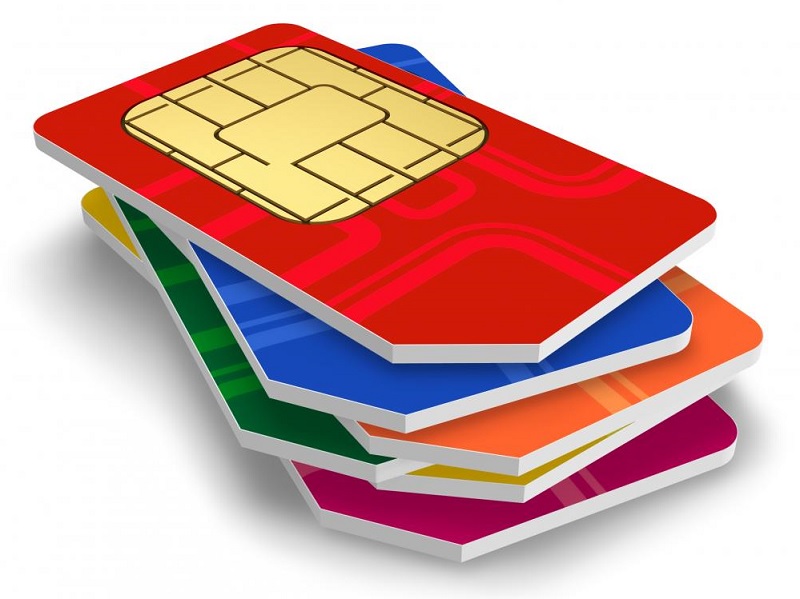What is a Sim Card?
A Sim card or also known as a Subscriber Identity Module is found in almost all mobile devices which have the capability of mobile wireless service for data and/or calls via a wireless company carrier such as AT&T, T-Mobile, H2O, Net10
Contrary to popular belief, sim cards contain very little [if any] user saved data. The main purpose of a sim card to to authenticate your device onto the network of choice and facilitate wireless transfers to and from your device to the wireless towers in the form of data and/or voice calls.

A SIM card contains its unique serial number (ICCID), international mobile subscriber identity (IMSI) number, security authentication and ciphering information, temporary information related to the local network (MCC-MNC), a list of the services the user has access to, and two passwords: a personal identification number (PIN) for ordinary use, and a personal unblocking code (PUK) for PIN unlocking.
The use of SIM cards is required in GSM Devices

Sim Card Cross Section
SIM cards store network-specific information used to authenticate and identify subscribers on the network. The most important of these are the ICCID, IMSI, Authentication Key (Ki), Local Area Identity (LAI) and Operator-Specific Emergency Number. The SIM also stores other carrier-specific data such as the SMSC (Short Message Service Center) number, Service Provider Name (SPN), Service Dialing Numbers (SDN), Advice-Of-Charge parameters and Value Added Service (VAS) applications.
SIM cards can come in various data capacities, from 8 KB to at least 256 KB. All allow a maximum of 250 contacts to be stored on the SIM, but while the 32 KB has room for 33 Mobile Network Codes (MNCs) or "network identifiers", the 64 KB version has room for 80 MNCs. This is used by network operators to store information on preferred networks, mostly used when the SIM is not in its home network but is roaming. The network operator that issued the SIM card can use this to have a phone connect to a preferred network, in order to make use of the best commercial agreement for the original network company instead of having to pay the network operator that the phone 'saw' first. This does not mean that a phone containing this SIM card can connect to a maximum of only 33 or 80 networks, but it means that the SIM card issuer can specify only up to that number of preferred networks; if a SIM is outside these preferred networks it will use the first or best available network.

Sim Card Sizes
An integrated circuit that is intended to securely store the international mobile subscriber identity (IMSI) number and its related key, which are used to identify and authenticate subscribers on mobile telephony devices (such as mobile phones and computers). It is also possible to store contact information on many SIM cards. SIM cards are always used on GSM phones; for CDMA phones, they are only needed for newer LTE-capable handsets. SIM cards can also be used in satellite phones.
The SIM card introduced a new and significant business opportunity for MVNOs — mobile virtual network operators — who lease capacity from one of the network operators rather than owning or operating a cellular telecoms network, and only provide a SIM card to their customers. MVNOs first appeared in Denmark, Hong Kong, Finland and the UK. Today they exist in over 50 countries, including most of Europe, United States, Canada, Mexico, Australia and parts of Asia, and account for approximately 10% of all mobile phone subscribers around the world.
On some networks, the mobile phone is locked to its carrier SIM card, meaning that the phone only works with SIM cards from the specific carrier. This is more common in markets where mobile phones are heavily subsidised by the carriers, and the business model depends on the customer staying with the service provider for a minimum term (typically 12, 18 or 24 months). SIM cards that are issued by providers with an associated contract are called SIM only deals. Common examples are the GSM networks in the United States, Canada, Australia, the UK and Poland. Many businesses offer the ability to remove the SIM lock from a phone, effectively making it possible to then use the phone on any network by inserting a different SIM card. Mostly, GSM and 3G mobile handsets can easily be unlocked and used on any suitable network with any SIM card.
In countries where the phones are not subsidised, e.g., India, Israel and Belgium, all phones are unlocked. Where the phone is not locked to its SIM card, the users can easily switch networks by simply replacing the SIM card of one network with that of another while using only one phone. This is typical, for example, among users who may want to optimise their carrier's traffic by different tariffs to different friends on different networks, or when traveling internationally.
In 2016, carriers started using the concept of automatic SIM reactivation whereby they let users reuse expired SIM cards instead of purchasing new ones when they wish to re-subscribe to that operator. This is particularly useful in countries where prepaid calls dominate and where competition drives high churn rates, as users had to return to a carrier shop to purchase a new SIM each time they wanted to churn back to an operator.
